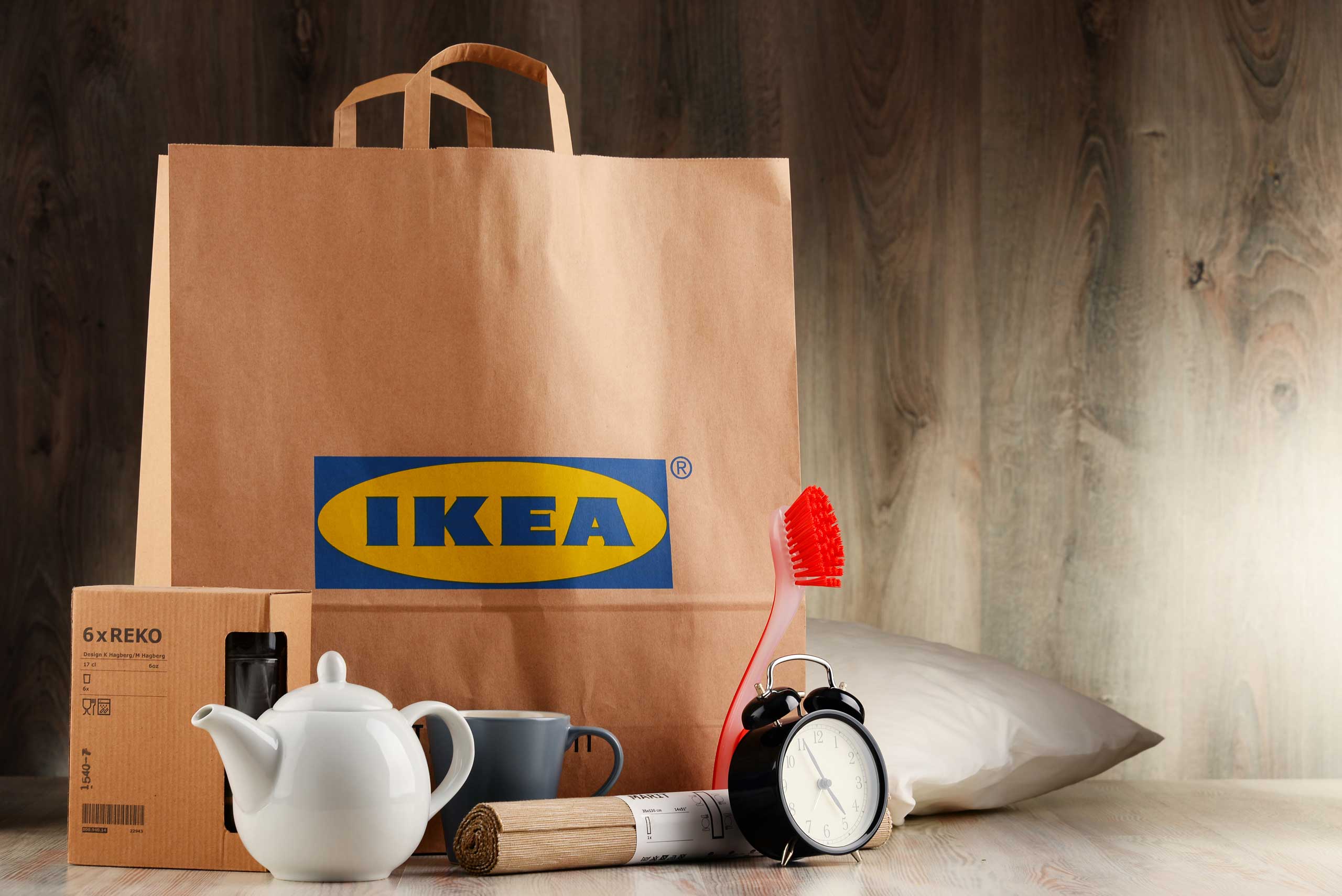Credit: monticellllo / stock.adobe.com

Founded in 1943, IKEA has been the largest furniture retailer in the world since 2008. For years, the Swedish company has also been ranking among the most valuable brands. After all, IKEA stands not only for do-it-yourself furniture, but for a modern, yet homey lifestyle; the furniture stores have become a destination for the whole family including comfort food and a kids’ play area. In 2018, the first IKEA store opened in the traditionally DIY-averse Indian market. The company has now expanded its presence to 433 offices in 52 countries. What are the foundations of its growing success? And what can up-and-coming companies learn from IKEA?
IKEA started out in 1943 as a mixed-mail-order company based in Småland, southern Sweden, its compound name already an omen for their later product philosophy: Ingvar Kamprad (name of founder) Elmtaryd (parental farm) Agunnaryd (hometown). Just five years later, founder Ingvar Kamprad moved on to selling furniture. Even then his vision was clear: to deliver modern, trendy design for the least possible money. This soon brought him into conflict with his suppliers, and he began looking to produce furniture directly while being as economical as possible. The DIY kit was born. In 1958, the first IKEA furniture store opened in Småland, followed five years later by the first branch in Norway, and finally in Denmark in 1968.
A slow but steady growth that suited Kamprad’s independent, thought-out philosophy. Even today, the founder, who died in 2018, is quoted as saying that he wanted long-term growth for his company and that IKEA would therefore not look to go public. Principles that the company still follows today, under the supervision of Kamprad’s two sons. Thus, the huge US market is only being conquered step by step: 50 IKEA stores are currently facing 53 in the much smaller main market Germany. 2018, it finally opened its first store in the South Indian tech metropolis Hyderabad, which was overrun by ecstatic shoppers, causing traffic chaos and hours of waiting to get into the store. On top of all that, IKEA was also able to grow financially in 2019 – sales rose by 5% year on year to over 37 billion. What are the reasons behind IKEA’s unstoppable success? A search for answers.
Emotions: Call on human needs
IKEA’s concept is based on creating not just furniture but a nice home. Customers can discover how that might look like while strolling through the showroom. The right lamp and a picture frame to complete your bedroom – or just go along with some of the suggestions in the showrooms. The homely feeling radiating from the exhibition rooms further encourages you to build yourself a home just like that. Don’t we all yearn for a nice home, after all?
The experience is completed by a cheap meal in the restaurant and a quick detour to the food aisle to pick up some more Swedish specialties to try at home. And while assembling the IKEA furniture is often challenging and takes time, the feeling of success when finished makes the effort worthwhile, while building an emotional connection with the “self-made” piece of furniture.

New Ebook
Marketing Operations: The Ultimate A-Z Guide
Marketing Operations (MOps) is still in its infancy. That’s primarily due to every company being different, and there isn’t a standard structure that can be applied to every marketing model. So, we’ve put together this short guide to illuminate what MOps is and how it should work in your company.
Growth: Think international from the start
Sweden as a small market offers very limited growth potential. Therefore, IKEA quickly considered international expansion. The need for a nice home is just as universal as budget limitations. Even the simple and minimalist Bauhaus style of IKEA, which used to be seen only in flats of designers and architects, can easily blend into every culture. At the same time, the products and their presentation are adapted to the respective national preferences.
Thus, showrooms in the Indian IKEA market reflect the often cramped conditions of large Indian families; folding chairs for numerous visitors and many colorful items are prominently on display. And since India has no tradition of DIY assembly, there are many helpers available. In the restaurants, the Scandinavian classics are complemented by dishes that cater to national tastes. This is how everyone at IKEA can feel right at home.
Patience: Planning is everything
Rather than relying on rapid growth, IKEA focused on intense planning and strategic action right from the start. This includes, for example, the in-depth analysis of needs in new country markets, long before the first store opens its doors. Again using the example of India: Here, the local IKEA team went on trips to numerous Indian apartments and houses.
Just like when they started in the US, the local market’s reaction to the first IKEA market was closely monitored and feedback was incorporated before starting further operations. Success proves IKEA right. The Hyderabad outlet was overrun by 40,000 enthused visitors on its opening day, with 4 million going on a shopping spree during the first year. Patience and a meticulously planned market entry have also paid off here, with further outlets to follow.
Learning: Using setbacks to improve
Despite its predominantly positive image, IKEA has been the subject of repeated controversy and criticism. From formaldehyde emissions from some furniture in the 1980s to allegations of child labor in IKEA manufacturing companies to the more recent issue of the general lack of sustainability of “disposable furniture”.
The fact that the IKEA brand has emerged largely unscathed from these scandals in the long run is mainly due to the company’s generally rapid and comprehensive response. For example, it introduced TNS (The Natural Step) for more environmentally friendly production, strict requirements for suppliers and reusable plastic bags. IKEA also takes proactive steps. Among them was the recent announcement in September 2019 to invest $2.8 billion in renewable energy infrastructure, together with the promise to not just become climate- neutral but climate-positive by 2030.
Investment: Thinking ahead
When it comes to environmental issues, IKEA is actively trying to position itself rather than waiting around for a next scandal to happen. It also closely observes the changes in consumer behavior and takes action. Since 2018, the company has been investing huge sums in securing its future top market position. It took on board the trend towards online shopping and started investing in an improved delivery service.
Instead of building ever more huge department stores outside cities, IKEA is now building more and more showrooms in central city locations, where customers can browse and get advice, before ordering online later. Another area of investment is sustainability, where IKEA is currently testing a rental service for its furniture in several country markets. An idea that meets not only sustainability goals, but also the corporate principle of cost economy.
IKEA: MARMIND® Top Tips
Know your market – comprehensive analysis is the basis for later success.
Be patient – well-considered decisions are more effective in the long run than actionism.
Thinking about the future – how can you anticipate future trends?
This article is based on the following sources:
https://www.cnbc.com/2019/10/05/psychology-behind-ikeas-huge-success.html

